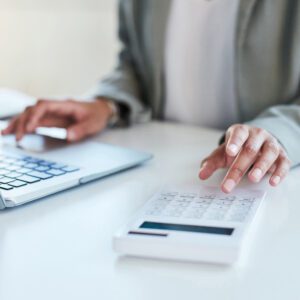The Coronavirus Act 2020 Functions of Her Majesty’s Revenue and Customs (Self-Employment Income Support Scheme) Direction
Key contact: Claire Knowles
Author: Adam McGlynn
The Chancellor of the Exchequer, Rishi Sunak, has once again exercised the powers permitted by sections 71 and 76 of the Coronavirus Act 2020. On Friday 1st May 2020 HM Treasury published the Coronavirus Act 2020 Functions of Her Majesty’s Revenue and Customs (Self-Employment Income Support Scheme) Direction (the Direction) which instructs HMRC to establish the previously announced support scheme for self-employed individuals (SEISS). Following significant pressure and debate the government announced SEISS on 26th March 2020, a week after promising to support employees through the Coronavirus Job Retention Scheme. Having received little further guidance since then, the Direction provides the first insight into the legal framework of SEISS.
Eligibility
To be eligible for support under SEISS the Direction states that individuals must provide any information HMRC deem necessary. It is anticipated that HMRC will create a platform for this similar to that of the Job Retention Scheme which allows applicants to answer questions and upload documents. A claim will not be eligible if it is ‘abusive’. HM Treasury and HMRC have previously voiced their concerns about the possibility of fraudulent SEISS claims so it is likely the application process will include precautionary measures and HMRC will likely follow up with retrospective audits over the coming months and years. A claim can only be made by a qualifying person. Should you need assistance evaluating eligibility please contact our employment team. A qualifying person satisfies the following:
- They are a self-employed individual whose business has been adversely affected by Coronavirus but they intend to continue trading in the 2020-21 tax year;
- They have delivered a tax return for a relevant year on or before 23 April 2020, at least for the tax year 2019-20;
- They must have carried on a trade in the tax year 2018-19 and 2019-20 though the Direction recognises that the individual does not necessarily need a tax return for the year 2018-19. This suggests that a claim will satisfy this criterion if the self-employed individual began trading anytime before the 2019-20 tax year;
- If the individual is a non-UK resident, or is a UK resident but is not domiciled in the UK for a relevant tax and has made a claim for remittance basis to apply, that individual will need to certify that their trading profits are equal to or greater than their relevant income for those relevant tax years; and
- They will need to meet the ‘profits condition’ which means the individual has average trading profits of £50,000 or less per relevant tax year since 2016-17.
Claim value
The Direction indicates that HMRC payments under SEISS will be made by way of a single lump sum payment equal to the lower of 3 months’ trading profits at a rate of 80% or £7,500. This entitlement mirrors the amount recoverable by employers under the Job Retention Scheme. Where the applicant is subject to a loan charge the tax year of 2018-19 will be excluded for the purposes of the claim value as well as for the purposes of the profits condition criterion of the eligibility test.
The Direction explicitly states that a claim under SEISS will not prejudice a claim under any similar scheme arising from a s76 Coronavirus Act direction. This is predominantly referring to the Coronavirus Job Retention Scheme meaning that an individual claiming under SEISS may also be furloughed from any position of employment they hold and be entitled to continued pay from their employer which the employer is, in turn, eligible to recover from HMRC. One important difference to the Job Retention Scheme is the ability to continue working. While furloughed workers are prohibited from working in the interests of their employer(s), self-employed individuals claiming under SEISS allowed to continue trading and earning on their own account and this will not affect their SEISS eligibility or entitlement value.
HMRC are expected to release further information in due course which may deviate from the Direction so watch this space for future updates from our Employment team or contact them directly if you would like to discuss your situation in more detail.






